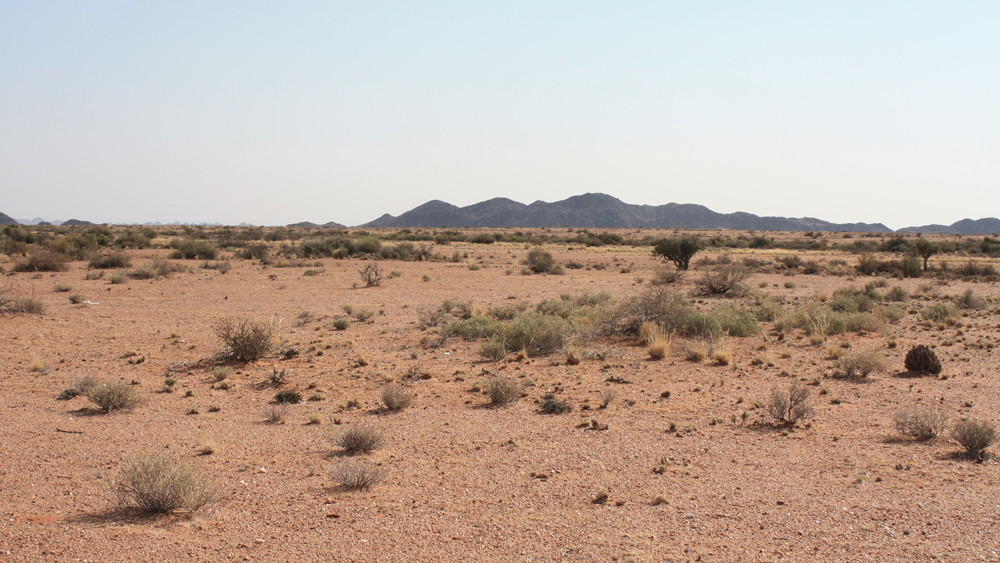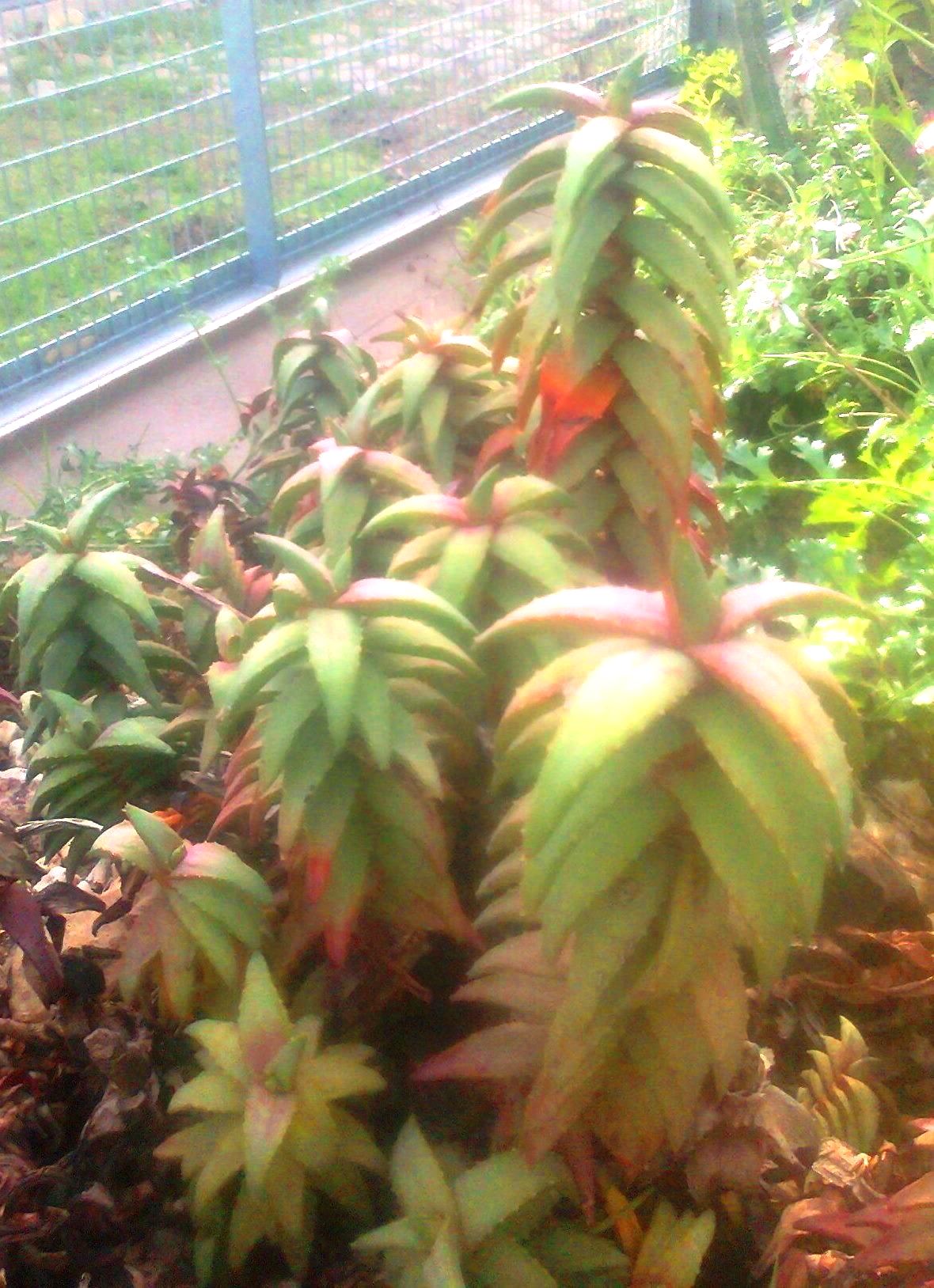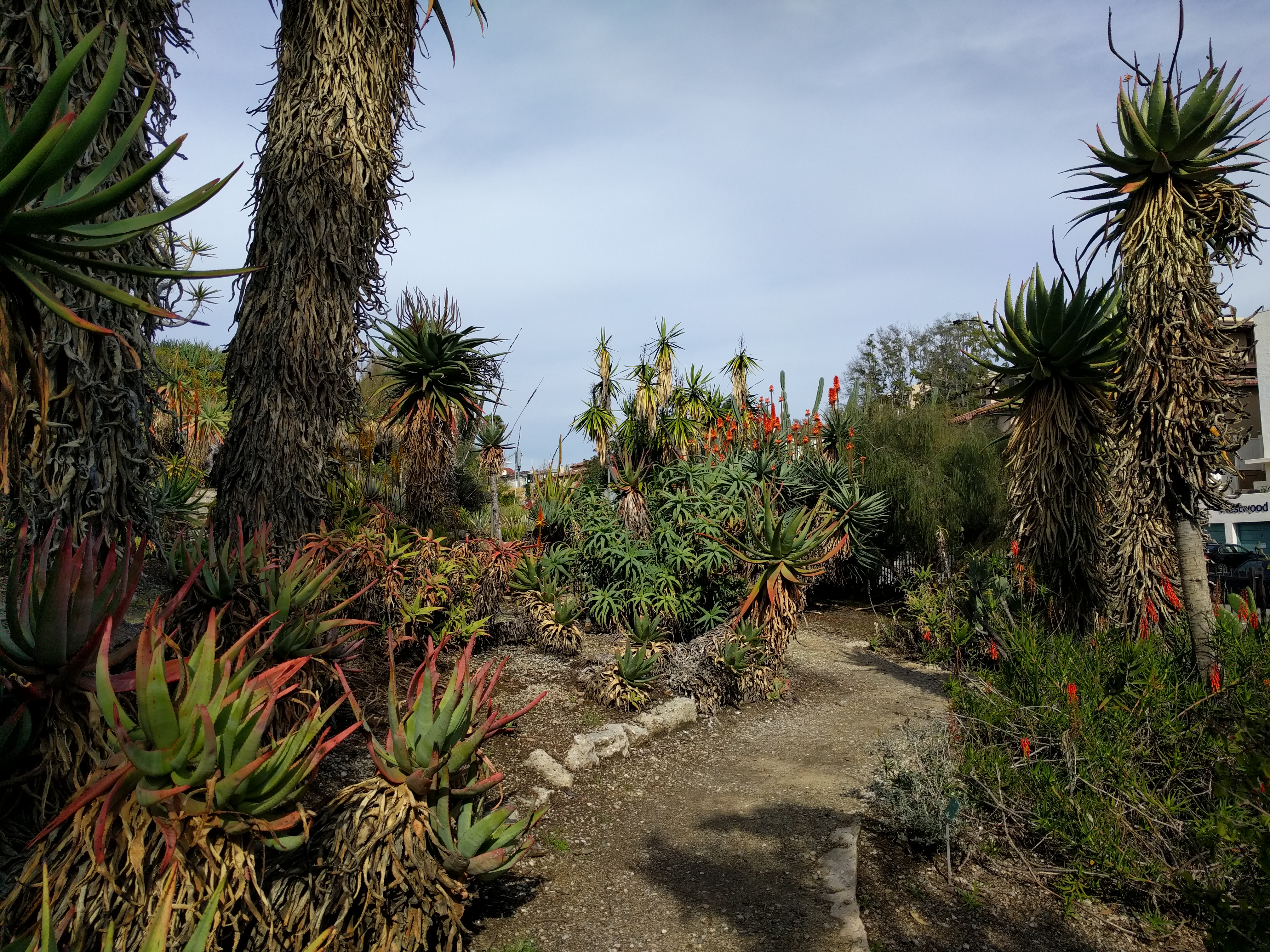|
Aloe Ser. Mitriformes
''Aloe'' ser. ''Mitriformes'' (the creeping aloes) is a taxonomic series within the genus '' Aloe'', comprising several closely related species of Southern African rambling aloe. These typically multi-branched sprawling aloe species have rigid fleshy leaves and slender pedicels about the length of the perianth, each being roughly 40 mm long. The stems tend to sprawl along the ground, with the ends densely leafed and upturned. These aloes are centred on the drier western portion of South Africa, and the far south of Namibia. Here they inhabit open, rocky areas and have consequently evolved their decumbent sprawling habit of growth. The species in this series comprise the common and widespread ''Aloe perfoliata'' with all its various subspecies, together with rarer related species such as ''Aloe arenicola'', ''Aloe dabenorisana'', ''Aloe meyeri'' and '' Aloe pavelkae''. ''Aloe pearsonii'' is sometimes included as an outlier in this series. Species and subspecies *''Aloe perfo ... [...More Info...] [...Related Items...] OR: [Wikipedia] [Google] [Baidu] |
Haworth
Haworth () is a village in the City of Bradford, West Yorkshire, England, in the Pennines, south-west of Keighley, west of Bradford and east of Colne in Lancashire. The surrounding areas include Oakworth and Oxenhope. Nearby villages include Cross Roads, Stanbury and Lumbfoot. Haworth is a tourist destination known for its association with the Brontë sisters and the preserved heritage Keighley and Worth Valley Railway. History Haworth is first mentioned as a settlement in 1209. The name may refer to a "hedged enclosure" or "hawthorn enclosure". The name was recorded as "Howorth" on a 1771 map. In 1850, local parish priest Patrick Brontë invited Benjamin Herschel Babbage to investigate the village's high early mortality rate, which had led to all but one of his six children, including the writers Emily and Anne Brontë, dying by the age of 31. Babbage's inspection uncovered deeply unsanitary conditions, including there being no sewers, excrement flowing down Hawort ... [...More Info...] [...Related Items...] OR: [Wikipedia] [Google] [Baidu] |
Aloe Perfoliata
''Aloe perfoliata'', the rubble aloe or mitre aloe, is a hardy creeping aloe, found in rocky, mountainous areas throughout the Western Cape, South Africa. Naming and classification ''Aloe perfoliata'' was formerly known as ''Aloe mitriformis''. The physical appearance of this aloe varies greatly depending on environment, and consequently various sub-populations have previously often been mistaken for being separate species. The South African National Biodiversity Institute now recognizes that these are all members of the same species, ''Aloe perfoliata'', comprising what were previously known as ''Aloe mitriformis'', ''Aloe distans'', ''Aloe comptonii'', ''Aloe albispina'' and ''Aloe flavispina'' among others. This species is the most widespread of a group of closely related "Creeping Aloes" ('' Mitriformes''), including the cliff-hanging aloes ''A. meyeri'' and ''A. dabenorisana''(stemless), as well as spotted '' Aloe arenicola'' of the South African west coast and the unusual ... [...More Info...] [...Related Items...] OR: [Wikipedia] [Google] [Baidu] |
Bushmanland, Northern Cape
Bushmanland is an arid area south of the Orange River and west of Kenhardt and east of Springbok ( Namaqualand) in the Northern Cape, South Africa. It includes the towns of Pofadder and Aggeneys Aggeneys is a mining town established in 1976 on a farm of that name, situated between Pofadder and Springbok in the Northern Cape, South Africa. Origin of the name It has been stated that "no-one is quite certain of the origin of the name Agg ..., and places such as Namies and Bosluis Pan. Extensive plains are dotted with inselbergs like the Gamsberg. Bushmanland is an arid area inland from Namaqualand. It is probably the most inhospitable area in South Africa, arid and largely with infertile soil and highly saline groundwater. Its wildlife, however, both fauna and flora, though sparse, are full of interest. Although the veld is too arid to bloom like that of the West Coast of Namaqualand, even when there is some spring rain, what does appear is highly unusual and often haunt ... [...More Info...] [...Related Items...] OR: [Wikipedia] [Google] [Baidu] |
Aloe Pearsonii
''Aloe pearsonii'' (Pearson's Aloe) is a very distinctive and unusual species of aloe, that is naturally endemic to the arid Richtersveld area on the border between South Africa and Namibia. Naming and classification ''Aloe pearsonii'' is often considered part of a group of southern African "Creeping Aloes" ('' Mitriformes'') together with closely related species ''Aloe perfoliata'', ''Aloe arenicola'', '' Aloe meyeri'' and '' Aloe dabenorisana''. However, other botanists believe it to be closer to the "Climbing Aloes" ('' Macrifoliae''). This unusual plant would be an outlier whichever series it was classified into, and is probably a "missing-link" intermediate between the two series. The name ''"pearsonii"'' remembers the botanist and first director of the South African National Botanical Institute, Professor Pearson. Appearance This aloe grows a clump of rigidly erect stems, that are covered in four highly symmetrical rows of thick re-curved leaves. In the dryer months the ... [...More Info...] [...Related Items...] OR: [Wikipedia] [Google] [Baidu] |
Aloe Pavelkae
''Aloe'' (; also written ''Aloë'') is a genus containing over 650 species of flowering succulent plants.WFO (2022): Aloe L. Published on the Internet;http://www.worldfloraonline.org/taxon/wfo-4000001341. Accessed on: 06 Nov 2022 The most widely known species is ''Aloe vera'', or "true aloe". It is called this because it is cultivated as the standard source for assorted pharmaceutical purposes. Other species, such as ''Aloe ferox'', are also cultivated or harvested from the wild for similar applications. The APG IV system (2016) places the genus in the family Asphodelaceae, subfamily Asphodeloideae. Within the subfamily it may be placed in the tribe Aloeae.Stevens, P.F. (2001 onwards).Asphodelaceae. ''Angiosperm Phylogeny Website''. Retrieved 2016-06-09. In the past, it has been assigned to the family Aloaceae (now included in the Asphodeloidae) or to a broadly circumscribed family Liliaceae (the lily family). The plant ''Agave americana'', which is sometimes called "America ... [...More Info...] [...Related Items...] OR: [Wikipedia] [Google] [Baidu] |
Aloe Meyeri
''Aloe meyeri'' is a succulent plant species from South Africa. The species was first formally described by Ernst Jacobus van Jaarsveld in 1981.https://www.wikidata.org/wiki/Q1484451 References External links 'Aloe meyeri' The Plant List 'Aloe meyeri' Encyclopedia of Life meyeri {{Asphodelaceae-stub ... [...More Info...] [...Related Items...] OR: [Wikipedia] [Google] [Baidu] |
Aloe Dabenorisana
''Aloe'' (; also written ''Aloë'') is a genus containing over 650 species of flowering succulent plants.WFO (2022): Aloe L. Published on the Internet;http://www.worldfloraonline.org/taxon/wfo-4000001341. Accessed on: 06 Nov 2022 The most widely known species is ''Aloe vera'', or "true aloe". It is called this because it is cultivated as the standard source for assorted pharmaceutical purposes. Other species, such as ''Aloe ferox'', are also cultivated or harvested from the wild for similar applications. The APG IV system (2016) places the genus in the family Asphodelaceae, subfamily Asphodeloideae. Within the subfamily it may be placed in the tribe Aloeae.Stevens, P.F. (2001 onwards).Asphodelaceae. ''Angiosperm Phylogeny Website''. Retrieved 2016-06-09. In the past, it has been assigned to the family Aloaceae (now included in the Asphodeloidae) or to a broadly circumscribed family Liliaceae (the lily family). The plant ''Agave americana'', which is sometimes called "America ... [...More Info...] [...Related Items...] OR: [Wikipedia] [Google] [Baidu] |
Aloe Arenicola
''Aloe arenicola'' (the sand aloe or Bont-Ot'korrie) is a spotted creeping aloe, indigenous to the arid west coast of South Africa. Distribution The name ''"arenicola"'' means "inhabitant of sands" in Latin, as this tough aloe is naturally restricted to the sandy dune areas that run in a narrow strip along the South African west coast, from Lamberts Bay in the south, up to the Namibian border in the north. This coastal strip lies within the Namaqualand, an arid winter-rainfall area. During the severest droughts, the plants get all the moisture they require from the mists that sweep up from the sea. Adapted as they are for arid, sandy, winter-rainfall desert, their roots and stems tend to rot when they are propagated in wet climates. Nonetheless, the distinctive colour and markings of this aloe have made it a popular ornamental in xeriscaping and it is widely grown for dry gardens. Appearance This aloe is a dark blue-green colour with narrow leaves that are covered in small wh ... [...More Info...] [...Related Items...] OR: [Wikipedia] [Google] [Baidu] |
Namibia
Namibia (, ), officially the Republic of Namibia, is a country in Southern Africa. Its western border is the Atlantic Ocean. It shares land borders with Zambia and Angola to the north, Botswana to the east and South Africa to the south and east. Although it does not border Zimbabwe, less than 200 metres (660 feet) of the Botswanan right bank of the Zambezi River separates the two countries. Namibia gained independence from South Africa on 21 March 1990, following the Namibian War of Independence. Its capital and largest city is Windhoek. Namibia is a member state of the United Nations (UN), the Southern African Development Community (SADC), the African Union (AU) and the Commonwealth of Nations. The driest country in sub-Saharan Africa, Namibia has been inhabited since pre-historic times by the San, Damara and Nama people. Around the 14th century, immigrating Bantu peoples arrived as part of the Bantu expansion. Since then, the Bantu groups, the largest being the ... [...More Info...] [...Related Items...] OR: [Wikipedia] [Google] [Baidu] |
Taxonomy (biology)
In biology, taxonomy () is the scientific study of naming, defining ( circumscribing) and classifying groups of biological organisms based on shared characteristics. Organisms are grouped into taxa (singular: taxon) and these groups are given a taxonomic rank; groups of a given rank can be aggregated to form a more inclusive group of higher rank, thus creating a taxonomic hierarchy. The principal ranks in modern use are domain, kingdom, phylum (''division'' is sometimes used in botany in place of ''phylum''), class, order, family, genus, and species. The Swedish botanist Carl Linnaeus is regarded as the founder of the current system of taxonomy, as he developed a ranked system known as Linnaean taxonomy for categorizing organisms and binomial nomenclature for naming organisms. With advances in the theory, data and analytical technology of biological systematics, the Linnaean system has transformed into a system of modern biological classification intended to reflect the ... [...More Info...] [...Related Items...] OR: [Wikipedia] [Google] [Baidu] |
South Africa
South Africa, officially the Republic of South Africa (RSA), is the southernmost country in Africa. It is bounded to the south by of coastline that stretch along the South Atlantic and Indian Oceans; to the north by the neighbouring countries of Namibia, Botswana, and Zimbabwe; and to the east and northeast by Mozambique and Eswatini. It also completely enclaves the country Lesotho. It is the southernmost country on the mainland of the Old World, and the second-most populous country located entirely south of the equator, after Tanzania. South Africa is a biodiversity hotspot, with unique biomes, plant and animal life. With over 60 million people, the country is the world's 24th-most populous nation and covers an area of . South Africa has three capital cities, with the executive, judicial and legislative branches of government based in Pretoria, Bloemfontein, and Cape Town respectively. The largest city is Johannesburg. About 80% of the population are Black Sou ... [...More Info...] [...Related Items...] OR: [Wikipedia] [Google] [Baidu] |
Perianth
The perianth (perigonium, perigon or perigone in monocots) is the non-reproductive part of the flower, and structure that forms an envelope surrounding the sexual organs, consisting of the calyx (sepals) and the corolla (petals) or tepals when called a perigone. The term ''perianth'' is derived from Greek περί (, "around") and άνθος (, "flower"), while ''perigonium'' is derived from περί () and γόνος (, "seed, sex organs"). In the mosses and liverworts (Marchantiophyta), the perianth is the sterile tubelike tissue that surrounds the female reproductive structure (or developing sporophyte). Flowering plants In flowering plants, the perianth may be described as being either dichlamydeous/heterochlamydeous in which the calyx and corolla are clearly separate, or homochlamydeous, in which they are indistinguishable (and the sepals and petals are collectively referred to as tepals). When the perianth is in two whorls, it is described as biseriate. While the ca ... [...More Info...] [...Related Items...] OR: [Wikipedia] [Google] [Baidu] |

.jpg)




